

Khalid Hasan
Making money is happiness, making other people happy is super happiness!
— Professor Muhammad Yunus, Nobel Laureate for Peace 2006
The world is going through a turbulent journey with economic and financial bumps impacting our lives and businesses. At the same time, increasing levels of poverty and unemployment are creating social and political unrest and challenging our quality of life everyday across the globe. Over the past 60 years, Prof. Kotler said, “marketing moved from being product-centric to being consumer-centric. Now marketing is again transforming to human-centricity (Kotler, Hermawan, & Iwan, 2010).”a In this chapter, we will learn about the importance of Social Marketing and a new concept — social business, conceptualized by Nobel Laureate Muhammad Yunus for eradicating poverty globally.
SOCIAL MARKETING
The concept of marketing is in the process of continuous change and evolution. Academics, researchers, and business thought-leaders have been continuously debating the concepts and practices of commercial marketing versus business for social well-being of humankind. Do we need businesses to be profit making? Alternatively, can we develop businesses that require no subsidy or truly social businesses that do not offer dividends? This chapter will focus on Social Marketing and social business using the case study of Sprinkles, which can be a Social Marketing program or a business venture.
Social Marketing is a set of evidence- and experience-based concepts and principles drawn from the field of marketing that provide a systematic approach to understanding (changing, developing, modifying, and sustaining) behavior and influencing it for social good.1 Like commercial marketing it is a fusion of science, practical “know how” and reflective practice focused on continuously improving the effectiveness and efficiency of programs.2
The primary aim of Social Marketing is to produce “social good,” while in “commercial marketing” the aim is primarily “financial,” profit or shareholder value. This does not mean that commercial marketers cannot contribute to achievement of social good. Rather marketing by assisting wealth creation also promotes social development and well-being. Social Marketing seeks to develop and integrate marketing concepts with other approaches to influence behaviors that benefit individuals and communities for the greater social good. It also seeks to integrate research, best practice, theory, audience, and partnership insight to inform the delivery of competition-sensitive and segmented social-change programs that are effective, efficient, equitable, and sustainable.
The concept of Social Marketing was first addressed as a research topic in 1960s by Julian Simon3 in his article “Some ‘Marketing Correct’ Recommendations for Family Planning Campaigns,” published in Demography. This may be the first published article on Social Marketing. Later in 1971, another origin of the term Social Marketing was written by Philip Kotler and Gerald Zaltman in their article in Journal of Marketing titled “Social Marketing: An Approach to Planned Social Change.”4 According to them, Social Marketing is the “design, implementation and control of programs calculated to influence the acceptability of social ideas and involving considerations of product planning, pricing, communication, distribution, and marketing research.”
Kotler and Andreasen5 define Social Marketing as — “differing from other areas of marketing only with respect to the objectives of the marketer and his or her organization. Social Marketing seeks to influence social behaviors not to benefit the marketer, but to benefit the target audience and the general society.” Social Marketing as a concept is widely accepted by donor agencies such as UNICEF, World Health Organizations, USAID, CIDA, GiZ, World Bank, and Asian Development Bank.
Andreasen,6 one of the pioneers of the Social Marketing concept, defined Social Marketing as “the application of commercial marketing technologies to the analysis, planning, execution, and evaluation of programs designed to influence the voluntary behavior of target audiences in order to improve their personal welfare and that of their society.”
Recently, French7 led the process of developing an appropriate definition of Social Marketing which is endorsed by the Boards of International Social Marketing Association (iSMA), European Social Marketing Association (ESMA), and Australian Association of Social Marketing (AASM) as: “Social marketing seeks to develop and integrate marketing concepts with other approaches to influence behaviors that benefit individuals and communities for the greater social good. Social Marketing practice is guided by ethical principles. It seeks to integrate research, best practice, theory, audience and partnership insight to inform the delivery of competition sensitive and segmented social change programs that are effective, efficient, equitable and sustainable.”
One of the core areas of Social Marketing is focusing on behavior “change” and it may be considered as the “bottom line” of all of its operations. However, change in behavior is not always the aim of Social Marketing programs; sometimes the aim will be to encourage existing positive behavior such as not smoking, or to modify a behavior, for example, by getting people to eat a bit less sugar rather than not eating sugar at all. It is more appropriate to understand that Social Marketing is focusing on “influencing” behavior. Professor French,1 CEO at Social Strategic Marketing, pioneered a movement to develop comprehensive behavioral influence programs that use every policy tool available to tackle the causes and symptoms of social problems. It is the time to concentrate more on influencing people’s behavior and practices for creating a better world through Social Marketing and business for our future generations.
Three key Social Marketing criteria: The criteria of Social Marketing, outlined by many experts on the simple definition of Social Marketing, are:
• Uses all the tools and techniques of commercial marketing.
• All programs must concentrate on social benefit (from individual to family to greater society/community) avoiding profit motive.
• Influencing behavior toward acceptance of any product, services, or practices.
Many may associate Social Marketing with social media-related marketing, that is, dealing with Facebook, Twitter, and so on, and/or with social advertising. Actually, Social Marketing was first widely used to promote social products and services since the 1970s, such as contraceptives (birth control pills, condoms, injectable, etc.), oral rehydration solutions (ORS), iodized salt, and many more. This concept was also used to run campaigns on family planning, public health, HIV/AIDS, anti-tobacco, etc.
Social Marketing is the application of all the tools, techniques, and strategies of commercial marketing in a systematic way to address social issues and problems for greater well-being of the people. Be it business analysis or strategic planning or any other marketing operations, Social Marketing uses all the components of marketing. Moreover, Social Marketing has gained a competitive edge over commercial marketing through introducing social movements as a framework that influences the behavior of the people and community toward accepting the intended campaign for social benefits. The concept has created various global brands and logos such as Red Ribbon for HIV/AIDS, ORSaline for ORS/ORT in Bangladesh, Nirodh condoms in India, Sprinkles micronutrient powder for Hospital for Sick Children/University of Toronto, and other brands and concepts.
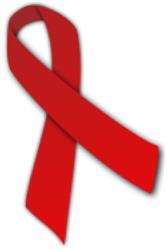
In India, the journey of Social marketing started back in 1968 through marketing of contraceptives, for example, Nirodh condoms by the Government of India. Social marketing of contraceptive pills — Mala D, a government brand — was available over the counter without a prescription which was a great milestone! Millions of couples were protected from unwanted pregnancy, especially among the poor people.
Similarly, in Bangladesh, Social Marketing is a success story, which started in 1974 by the government in collaboration with Family Planning Social Marketing Project (Social Marketing Company), with technical assistance from Population Services International (PSI) and financial support from USAID. Uncontrolled population growth was a big challenge in Bangladesh. The Social Marketing approach also helped to slow down the population growth from 7% to 1.64% in four decades, and is considered as one of the largest and most successful Social Marketing programs on family planning and child health globally. Other products and services which are now promoted around the world using the Social Marketing approach are contraceptives, oral saline, micronutrient powder, sanitary napkins, etc.
The introduction and market penetration of any social product sometimes go against cultural practices, beliefs, and religious sentiments. To overcome these challenges and influence behaviors is not easy. However, Social Marketing experts have done a great job in dispelling myths and rumors and sometimes the emotions and sentiments associated with not adopting products such as condoms. Other organizations like Johns Hopkins University, UNICEF, Population Services International, Micronutrient Initiatives, etc. have also played a significant role in addressing barriers to Social Marketing through the delivery of effective “behavior influencing campaigns.” In fact, the success stories of Social Marketing of products and services supported by robust research and evaluations, using both quantitative and qualitative techniques, form the cornerstone of Social Marketing effectiveness.
Similar to commercial products, “social products” can and have been successfully distributed through commercial and non-commercial distribution networks such as convenience stores, pharmacies, chemist shops, and other retail outlets. However, a uniquely created Social Marketing distribution model is becoming popular in commercial marketing as well. Distribution and marketing through health workers and community volunteers in the remote villages at the doorsteps and using promotional campaigns (such as mobile film van, home yard meeting, interpersonal communication, traditional media, and events) is found to be very effective in creating demand for the products and changing behavior.
MNCs like Unilever have adopted this model through their various campaigns in Bangladesh, India, etc. With the launch of Project Sunlight, Unilever has taken another leap forward toward what is increasingly recognized as the future of effective Social Marketing. Central to such leadership is the recognition that a brand needs to lead with its social purpose to ensure that it is meaningful and relevant to customers’ lives. Recently, Unilever’s campaign on “Save Water, Change the World” advocates saving water by stressing “Saving water is something we all know we should do, but more often than not, we do not. But the fact is, if we could make small changes in daily habits, then we could do a lot for our environment and even something for our wallets.” (https://www.projectsunlight.us)
Social Marketing, similar to commercial marketing, primarily focuses on consumers. At the core of the marketing concept is the focus on investigating and addressing consumers’ or citizens’ needs and it does not want “drive” toward buying the products and services for profit motive, but rather for social well-being. This is the beauty of the Social Marketing concept. Recently, Social Marketing has also added three more “P’s” — Publics, Policy, and Partnership to the traditional 4P model of marketing — product, price, promotions, and place.
Publics: “Publics” refers to different audiences linked with the programs for making them successful, and may include both external and internal groups. External publics include the target audience and other stakeholders (policymakers, gatekeepers, media, elected representatives, opinion leaders, etc.) and the internal publics are those who are directly involved with the program or event in the implementation process.
Policy: For any long term, successful Social Marketing program, there is a strong need for policy, supported by the government in the respective country.
Partnership: This involves teaming up with other organizations for making the program successful. The partners will have similar broader goals and mission. For example, for implementing HIV/AIDS awareness campaign globally, The Global Fund to Fight AIDS, Tuberculosis, and Malaria (often called The Global Fund or GFATM) started its operations in January 2002. Microsoft founder Bill Gates was one of the first private foundations among many bilateral donors to provide seed money for the project. Implementation is done by country-based local stakeholder organizations, government, NGO, UN, faith-based, and private sector actors. These partnerships help achieving the goals of the programs/projects successfully, which is otherwise not possible for any single agency or organization to accomplish.
Though Johns Hopkins University developed the concept of Behavior Change Communication a few decades ago and implemented it in many countries. However, recently, scholars and researchers have started debating the efficacy and practicality of this concept. The BCC model evolved from a health education and information approach (sometimes known as IEC — information, education and communication) to respond to what we now know about the need for engaging communities but a major criticism is that it is stuck in an individualistic communications dominated paradigm of change, focused on getting people to change their behavior and do what they are told by external experts.
According to Professor Jeff French, “BCC is often an impediment to the delivery of more effective systemic social programs. It often only focuses on the symptoms of problems and does nothing to address the causes. BCC approach has serious limitations and is often counterproductive as it focuses on individual change and is worse only on the role of communication in that process. It is the time to start a movement to challenge BCC and replace it with a more strategic approach to using citizen’s insights to develop comprehensive behavioral influence programs that use every policy tool available to tackle the causes and symptoms of social problems rather than pretend that communication is the solution.” He further suggests that there are five important limitations — first, it is overly focused on change rather than influencing behavior such as maintaining and fostering positive social behavior. Second, it assumes that communication with a bit of community engagement thrown in is a powerful influence on change when we know that often it is not. Third, it conceptualizes community engagement as a means to an end, that is, behavior change rather than an end in itself, that is, self-determination. Fourth, it discounts up-stream environmental and economic issues and over emphasizes personal responsibility. In essence, it is a victim blaming approach. Lastly, it does not utilize everything we know about setting up choice environments and putting in place supportive social policy as the key ways to improve health and well-being.8
Social marketing represents a powerful set of concepts and a systematic approach to planning comprehensive social programs aimed at influencing behavior. It has been incredibly successful in both the developing world working on issues such as population control and HIV and in the developed world behavioral issue such as smoking and teenage pregnancy. Social Marketing has also developed new forms of promotion and distribution that are not only effective and efficient for delivering social good but can also be used synergistically with commercial sector programs aimed at both promoting social goods and creating wealth. Social Marketing should be seen as a more effective and efficient way to address social issues and superior to limited BCC approaches which currently still attracts a great deal of international funding especially from north America.
SOCIAL BUSINESS
We live in exciting times — an era when the world is ripe for the kind of amazing, positive change that social business can create.
— Professor Muhammad Yunus, Nobel Laureate for Peace 2006
Social Business is a non-loss, non-dividend, company with a social objective and vision, and it adopts all the tools and techniques of marketing.
Nobel Laureate Muhammad Yunus of Bangladesh conceptualizes the new mantra of Social Business for eradicating poverty globally. There is a growing interest in this new kind of business directed mainly at the poor to help reduce poverty. According to him, social business is a cause-driven business where the investors/owners can gradually recoup the money invested, but cannot take any dividend. The purpose of the investment is purely to achieve one or more social objectives through the operation of the company; no personal gain is desired by the investors. The company must cover all costs and make profit, and at the same time achieve its social objectives, such as healthcare for the poor, housing for the poor, financial services for the poor, nutrition for malnourished children, providing safe drinking water, introducing renewable energy, etc. using a business model.

Credit: Nasir Ali Mamun/Yunus Centre.
The impact of the business on people or the environment, rather than the amount of profit made in a given period, measures the success of social business. Sustainability of the company indicates that it is running as a business. The objective of the company is to achieve social goal(s). The concept of social business is best described by Professor Muhammad Yunus in his books “Creating a world without poverty — Social Business and the future of capitalism and Building Social Business — The new kind of capitalism that serves humanity’s most pressing needs.”a
Seven Principles of Social Business
1. Business objective will be to overcome poverty, or one or more problems (such as education, health, technology access, and environment), which threaten people and society; it is not for profit maximization
2. Financial and economic sustainability
3. Investors get back their investment amount only. No dividend is given beyond investment money
4. When investment amount is paid back, company profit stays with the company for expansion and improvement
5. Environmentally conscious
6. Workforce gets market wage with better working conditions
7. … do it with joy.
Professor Yunus defined a Social Business as a business:
• Created and designed to address a social problem
• A non-loss, non-dividend company, that is
– It is financially self-sustainable and
– Profits realized by the business are reinvested in the business itself (or used to start other social businesses), with the aim of increasing social impact, for example, expanding the company’s reach, improving the products or services, or in other ways subsidizing the social mission.
– Unlike a profit-maximizing business, the prime aim of a social business is not to maximize profits (although generating profits is desired). Furthermore, business owners do not receive any dividends out of the business profits, if any.
On the other hand, unlike a non-profit, a Social Business is not dependent on donations or on private or public grants to survive and to operate, because, as any other business, it is self-sustainable. Furthermore, unlike a non-profit, where funds are spent only once on the field, funds in a Social Business are invested to increase and improve the business’ operations on the field on an indefinite basis. According to Yunus: “A charity dollar has only one life; a Social Business dollar can be invested over and over again” (http://en.wikipedia.org/wiki/Social_business).
Human Beings Are Not Moneymaking Robots!
“I was amazed how easy it was to solve human problems if we designed it as a business with the sole mission of solving a problem, and with no intention to benefit personally from the business. We are always told that business-engine was designed for only one use, making personal money. I used the same engine for a completely different purpose, that is, to solve human problems. I found it extremely powerful in getting the job done. Suddenly all the creative power could be marshaled behind this engine for one specific purpose — solving human problems. I wondered why the world left the problem solving to the governments and charities alone. I found my own answer. It was because business world was given a very clear mandate by the economic theory. Their only mandate was to make money, leaving the people’s problem to be addressed by governments and charities. A businessperson is supposed to be driven by self-Interest. To him/her, business is business.

Human beings are not moneymaking robots. They are multi-dimensional beings with both selfishness and selflessness. When I create a social business, I am allowing the selflessness to be expressed through business. Old interpretation says selflessness cannot be a part of the business world; it is to be expressed in the world of charity. My point is if human being has selflessness in his DNA, why it should not be allowed in the business world. Business world should be an unbiased playground for both selfishness and selflessness. Economics textbook should introduce two types of businesses to the students, self-interest driven business and selflessness-driven business. Let the young people decide whether they would like a cocktail of both businesses mixing them in various proportions, or enjoy each one separately.
In the world of selfishness driven business, many express their selfishness in its extreme form, they become limitlessly greedy. They become addicted to money. In the process, humankind has been brought to the verge of losing its human identity. A human being is a person of love, empathy, compassion, and fellow feeling. If we create a conceptual framework that allows us, indeed encourages us, to express our deep-rooted human values in our economic life we can transform the wealth-pyramid into a wealth-diamond. These values can be expressed through Social Business to take us there.”
Source: Quoted from an article on “Can Wealth Concentration be Stopped?” by Professor Mohammad Yunus sent to Dr. Khalid Hasan, February 2016.
Yunus said “besides individuals, corporates can also invest in social business. Usually corporates create foundations for their companies. They can easily direct the foundations to invest in social businesses. Foundations can invest in regular companies, and make money to invest in social businesses, for example Bosch and Tata. In addition, corporates can create social businesses as their subsidiaries; can have joint ventures with other social businesses. There are many excellent examples of joint venture social businesses, such as Danone, Veolia, Uniqlo, Intel Corporation, McCain, Euglena, and others”b (Quoted from an article on “Can Wealth Concentration be Stopped?” by Professor Mohammad Yunus sent to author (Dr. Khalid Hasan), February 2016).
Social Business has got momentum among the youths in different universities. Universities across the world have already started a variety of programs and research initiatives on social business. Nima wrote in Social Business Academia Report 2014 “When social business gained momentum within the past few years, many universities around the world started initiatives in this direction. These universities are meanwhile an important pillar of the social business movement. Through teaching social business, universities are able to reach and educate the young generation about ideas and models to solve social problems in a financially self-sustainable way. Through research, universities significantly contribute to better understand and measure the impact that social businesses have. Through practical implementation, universities are able to directly translate social business knowledge into projects on the ground and thus enrich the learning experience for students.”9 So far, more than 20 leading universities in different countries (including the United States, Canada, Germany, Bangladesh, Italy, Brazil, Turkey, and any more) have started research and teaching programs on social business.
Mjoes said that “lasting peace cannot be achieved unless large population groups find ways in which to break out of poverty.”10 The future of marketing evolves around the welfare and well-being of the people — the ultimate consumers of products and services. We must shift from product and customer centricity toward humanity and human spirit. The concept of social business may show a new horizon of hope where majority of the people especially at the bottom of the pyramid across the world will be able to graduate themselves upward by discovering their enormous creative potential.
CASE: SOCIAL MARKETING AND SOCIAL BUSINESS
Social Marketing of Sprinkles: From Formative Research to Marketing Reality
Stanley H. Zlotkin
Khalid Hasan
This case on Sprinkles in combating iron-deficiency anemia among the poor children can be an appropriate case equally applicable for Social Marketing and/or social business concepts.
Iron deficiency is the world’s most common yet preventable nutritional problem. Though largely eradicated from the developed countries, more than 750 million children in the developing countries still have iron-deficiency anemia.11 Iron-deficiency anemia (IDA) is a condition, in which the body has lower levels of healthy red blood cells because of inadequate iron in the body. The main causes of iron deficiency are poor absorption of iron (vitamin C aides in iron absorption), inadequate daily intake of iron, pregnancy, growth spurts, and blood loss due to heavy periods or internal bleeding. IDA is primarily caused by diets with insufficient iron or by blood loss and is more commonly found in the South Asian countries, including India, Bangladesh, and Pakistan.
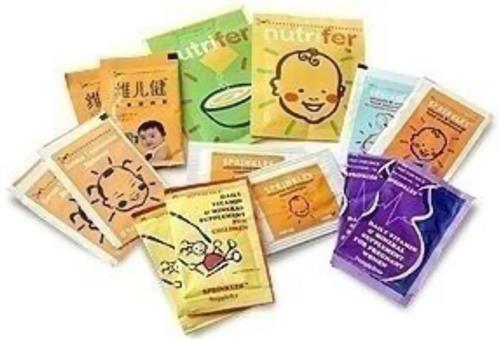
IDA is a leading cause of morbidity and mortality worldwide, affecting over two-thirds of children in developing countries.11 In Bangladesh, over 75% of the infants and young children aged 6–12 months are affected by IDA. Moreover, more than 40% of the children are malnourished. WHO and UNICEF have suggested that infants 6–24 months should be frequently given small complementary meals rich in energy, proteins, and micronutrients, in addition to breast milk. Though surveys show that breastfeeding is generally continued well into the second year of life, infants are rarely given food with adequate quantities of required nutrients.12 Further complicating matters, complementary food predominantly consists of cereals, which contain high levels of phytate–apotent iron absorption-inhibitor. Consequently, infants are highly susceptible to iron-deficiency anemia, and therefore morbidity and mortality. The long-term consequences of anemia in a child’s life are multifarious and fatal. These consequences include impaired cognitive development, decreased learning ability, poor school achievement, weakened body resistance to illness and disease and eventually, reduced wages and quality of life.13–16
SPRINKLES: PROVEN SCIENTIFICALLY ACCEPTABLE
Stanley H. Zlotkin and his colleagues found that Sprinkles were just as effective as ferrous sulphate in raising the level of hemoglobin in children’s blood (in other words, at treating anemia). The results of seven community-based trials using Sprinkles in four countries are summarized below.
“Each stage in the evolution of the Sprinkles intervention has been evaluated in a controlled manner,” say the authors. “We determined that the use of encapsulated iron did not appreciably change the taste or color of the food to which it was added, we showed that the hemoglobin response in anemic infants was equivalent to the current standard of practice, and we documented the acceptability of Sprinkles among caregivers who used Sprinkles in their homes.”
Public Library of Science
In the results of Zlotkin et al.’s research study on Sprinkles,17 IDA was recognized as more common in the South Asian countries. The burden of iron deficiency can be reduced through holistic approaches, which promote healthy weaning practices and the use of appropriate complementary foods with improved nutritional value.
To combat the challenges posed by IDA and suboptimal infant feeding practices, Dr. Stanley Zlotkin and other researchers from the Hospital for Sick Children (HSC) and the University of Toronto, developed Sprinkles — a new formulation and strategy to deliver iron and other essential micronutrients to infants. Proper use of this new technology would enhance child growth, development, and survival.
Sprinkles are a powdered formula of microencapsulated iron and other micronutrients like zinc, folic acid, and vitamin A and C; they are delivered in single-serving sachets and sprinkled onto complementary feeding items. The traditional intervention used to control IDA in children was an iron supplement delivered as ferrous sulphate syrup. This treatment, however, is not very acceptable among children because of its unpleasant, metallic taste. The syrup also leaves a dark stain on teeth and can induce abdominal discomfort.
These unpleasant side effects are often avoided when using Sprinkles, which are mixed into homemade, semisolid weaning foods right before feeding, without changing the color, flavor, and taste of the food. The addition of Sprinkles to any homemade food immediately fortifies the food, and hence the use of Sprinkles is also referred to as “home fortification.”
Research in different countries: Studies conducted in many countries around the world found Sprinkles to be a safe and effective method for treating and preventing IDA among children. During the period between 1998 and 2004, several randomized community-based trials on Sprinkles were completed in five different countries, involving over 2000 anemic and non-anemic infants and children living in disadvantaged conditions, including poverty and risk of infectious diseases. The objectives of these studies were to evaluate the efficacy and acceptability of Sprinkles in diverse settings and to describe the absorption of iron from Sprinkles. Overall, Sprinkles have been found successful in treating and preventing IDA among children and acceptable to both children and caregivers. Through using Sprinkles, the cure rates for anemia have ranged from 55% to 90%, which are comparable to the cure rates of using iron drops.
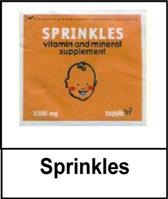
In 2005, the Hospital for Sick Children (HSC), Toronto, started investigating how to use Social Marketing strategies to help bring this effective and low-cost technology to the people in Bangladesh, requiring micronutrient supplement. Before doing so, Nielsen in Bangladesh (previously known as ACNielsen), in collaboration with BRAC and HSC carried out formative research and pilot testing of Sprinkles distribution among the target population. The study helped to identify factors that may influence the acceptance and use of Sprinkles. It also helped to develop an effective and sustainable Social Marketing strategy on Sprinkles to reduce the prevalence of IDA among infants and young children in Bangladesh. A comprehensive Social Marketing and communications strategy was developed to support the implementation of the program on Sprinkles distribution and communication.
The overall objectives of the study were: (a) to gain an in-depth understanding of the social, cultural, political, and environmental contexts of childhood anemia, including options for its prevention and cure; and (b) to develop an effective and sustainable Social Marketing strategy on Sprinkles for reducing the prevalence of IDA among the infants and young children in Bangladesh.
Research methodology: The study was conducted in Bangladesh from statistically selected and appropriate rural and urban areas. Since the population in Bangladesh is heterogeneous by socioeconomic conditions, religion, culture, and belief systems, sampling methodology was designed to satisfy dynamic geophysical and socioeconomic characteristics, as well as the country’s pluralistic culture and belief systems, which have an enormous influence on human behavior. Formative research captured pertinent information on these shapers of society to inform the development of an effective program on Sprinkles.
• Household survey: Baseline information on knowledge, attitudes, and practices (KAP) and opinions of different stakeholders in the community were collected during the study period by using household interviews. Overall, 756 mothers of children (6–24 months old) were interviewed from 9 upazillas (sub-districts).
• In-depth interviews: In-depth interviews among different groups of key informants (such as 36 mothers, 9 BRAC Community Health Volunteers (CHV) known as Shastho Shebika, 9 rural medical practitioners (RMP), 10 community/religious leaders, 8 government Family Welfare Assistants, 6 Health Assistants, 5 nutritionists, and 7 NGO workers).
• Grocers/convenience stores: 50 convenient stores/grocers located within the study villages and urban areas were interviewed. The data helped to understand their willingness to procure and sell Sprinkles.
• Trial of improved practices (TIPs): An innovative research approach to identify changes/influences on the behavior of the study population groups called TIPs was carried out. After the baseline data collection and analysis, 36 mothers (4 from each Upazilla) were randomly selected. Each of them was given 60 sachets (to be consumed in 60–90 days). During and after TIPs, in-depth interviews were conducted among these mothers to understand their views.
• Final phase: In the final phase of the analysis, all data were analyzed, organized, presented and interpreted under broad themes, enabling a greater understanding of local responses to Sprinkles and allowing the identification of strengths, weakness, opportunities and threats (SWOT) for possible strategies on Sprinkles interventions. The findings were used to develop Social Marketing strategies for Sprinkles in Bangladesh.
A wide range of activities was implemented for this study, as follows:
Distribution agent for Sprinkles: Sprinkles needs to be readily available for infants and children requiring improved micronutrient intake. As such, distribution mechanisms must make the product easily accessible, people oriented, and sustainable. The consumers’ perspectives are critical in formulating an effective product distribution strategy. Thus, the study collected consumers’ views on their preferences for obtaining Sprinkles. Consumers were questioned about where they obtained health commodities, as well as their opinions on convenient supply sources. Convenient stores/retailers were interviewed to get a clear picture on the sales of these commodities; service providers were also approached. The different outlets proposed by respondents were triangulated and the potential sources specified by them included grocery/convenient stores (Mudi shops), pharmacies/drug sellers, BRAC CHVs (Shastho Shebika SS), and NGO workers.
Consumers’ perspective: Post-TIPs in-depth interviews with mothers revealed that they preferred to get their supply of Sprinkles from the nearest sources. Most mothers specified the groceries/convenient stores as their preferred primary source for Sprinkles distribution. According to them, most convenient shops are located nearby and would remain open longer than alternative options. Many mothers also identified the pharmacies as a potential source of getting Sprinkles. However, rural mothers also favor the involvement of CHVs/SS as the distribution agent of Sprinkles. CHVs could easily distribute Sprinkles, especially during their routine home visit, thus ensuring a household level delivery.
Formation of Sprinkles Working Group (SWG): Aiming to conduct the formative research properly, the “Sprinkles Working Group” (SWG) was formed, drawing experts from BRAC, Nielsen and the Hospital for Sick Children, Toronto, Canada.
Nutrition education session with mothers: In each village, CHVs and Nielsen Research Associates (RAs) jointly mobilized the mothers of selected children to attend a nutrition education session at a convenient and central location in the village. The RAs and CHVs educated mothers through presentations with flipcharts. In addition to teaching mothers about the correct dosage of Sprinkles, complementary feeding, hygiene, etc., the 15 sachets of Sprinkles were supplied to each attending mother as a first installment of four planned installments; this supply would allow mothers to use Sprinkles for the next two weeks. Sixty sachets were supplied to each target child by four bi-weekly installments, 15 sachets in each installment. This system gave a space to the RAs to carry out weekly monitoring of compliance, identify barriers to compliance, and other difficulties the mothers were facing in feeding Sprinkles each week.
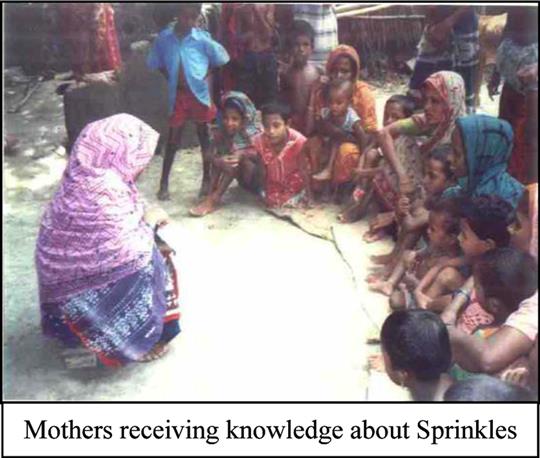
Distribution of Sprinkles: Under the RAs’ supervision, the CHVs distributed Sprinkles in airtight polythene bags to mothers for the first 15 days. One sachet of Sprinkles was to be given once a day to each child. Every fortnight, CHVs took back the Sprinkles sachets, whether empty or full (not fed), and gave the mothers another 15 sachets for the next 15 days. In this way, a total of four visits were made to cover the 60-day intervention period. Each mother was provided with a 60-day calendar to record the daily feeding of Sprinkles.
Monitoring: The RAs and the CHVs separately visited each child at least once a week, primarily to assess the consumption levels and to address any problems that might be encountered while feeding or handling the sachets. During these visits they also reinforced, motivated, and encouraged parents to continue regular feeding of Sprinkles with daily cooked foods.
Based on the findings of formative research, the following Social Marketing strategy was proposed to the prospective manufacturers/marketer of Sprinkles.
Vision/Mission: To reduce, if not to eliminate, iron-deficiency anemia (IDA) among Bangladeshi children aged 6–24 months, by distributing Sprinkles at an affordable price. The focus was on the quality of life for the future generation and, therefore, private and public actors would engage in manufacturing and distributing Sprinkles, with special attention given to the underprivileged community. Steps would be taken toward attaining long-term financial sustainability so that dependence on donors remains minimal.
Goal: To develop and implement an effective and sustainable program for reducing the prevalence of iron-deficiency anemia among the infants and young children in Bangladesh.
Objectives: To determine how to introduce Sprinkles to the target population and to design a Social Marketing strategy to promote the use of Sprinkles in Bangladesh.
Sprinkles |
Competitive Products |
|
|
|
Strength |
Strength |
|
|
|
Weakness/challenges |
Weakness/challenges (Syrup only) |
Side effects:
|
Side effects:
|
Opportunities |
Opportunities |
|
|
Threats |
Threats |
|
|
Pricing |
Pricing |
|
|
Therefore, Sprinkles has better edge over its competitors. |
|
Based on the findings, in-depth discussions with the key informants and experts, and review of relevant documents, it was evident that there is a potential market of Sprinkles in Bangladesh. The authors of this case estimated a potential market for Sprinkles. The major considerations were demand for Sprinkles based on market research, population growth rate in rural and urban areas, percentage of anemic children (aged 6–24 months), total number of sachets needed per anemic child and supply possibility of the products over the years.
Sprinkles adoption process: A great challenge lay in understanding how potential customers learn about, try and adopt the new brands of Sprinkles. Considering the adoption process, consumers were expected to pass through the following five major stages: (1) awareness, (2) interest, (3) evaluation, (4) trial, and (5) adoption.
During the initial stages of adoption, Sprinkles was projected to penetrate approximately 15–20% of the customers, gradually capturing a larger portion of the market. In the fifth year, the adoption rate was projected to be more than 70%.
Table 1: Adoption Rate of Sprinkles by Months.

Projected market size of Sprinkles
Assumption:
– Adoption rate in year 1: 15% of the total anemic children
– Adoption rate in year 2: 35% of the total anemic children
– Adoption rate in year 3: 50% of the total anemic children
– Adoption rate in year 4: 65% of the total anemic children
– Adoption rate in year 5: 70% of the total anemic children.
IMPLEMENTATION STRATEGY: HOW TO SUCCESSFULLY DELIVER SPRINKLES?
Consumer — the target audience: The target consumers of Sprinkles are children aged 6–24 months. Thus, for successful and effective marketing of Sprinkles require addressing the following three broad categories of the audiences:
• Primary: (a) Mothers of children aged 6–24 months and (b) Caregivers of children aged 6–24 months
• Secondary: (a) Mothers-in-law and/or fathers-in-law of the parents (when mother is not available), (b) Fathers of children aged 6–24 months, (c) Convenient stores/retailers, pharmacies, (d) Health service providers (RMP, HA, FWA, village doctors, etc.)
• Tertiary: (a) Community leaders, religious leaders, (b) Experts (child specialists, doctors, etc.), (d) Local NGOs.
Market segmentation: Considering the socioeconomic and geographic differences, the Sprinkles market should be differentiated into four major segments — urban, plain, ultra-poor, and remote.
Product positioning: Philip Kotler, the marketing Guru, explained that product positioning is very crucial when penetrating any market. According to Kotler, product positioning is the design of a company’s offering and image so that a product occupies a meaningful and distinct competitive position in the targeted customers’ mind.18 The formative research findings proposed to position Sprinkles as a nutrition supplement addressing IDA, as described in Figure 1.
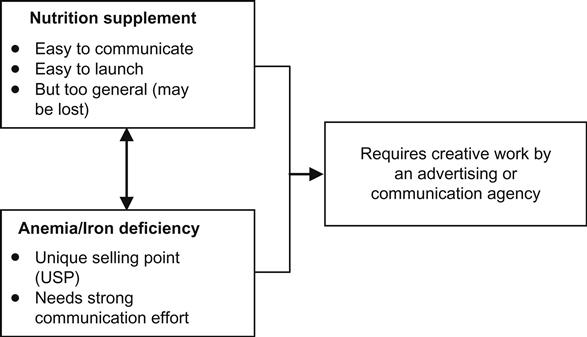
Figure 1: Product Position of Sprinkles.
Brand name and logo: The brand name and logo of Sprinkles would play an important role in penetrating and positioning the product in the target markets. Any improper steps might lower the brand image or make the product appear cheap to the customers. Systematic market research would help establish an appropriate name and logo.
As per suggestions, currently two large Bangladeshi organizations are mainly involved in marketing Sprinkles — Social Marketing Company (SMC) and BRAC. SMC is the largest social marketing company started marketing Sprinkles under the brand name of “Moni Mix” as a Social Marketing product. On the other hand, BRAC — world’s largest NGO — started their operations among the poor and ultra-poor people through the brand “Pushti kona.” SMC manufactures Moni Mix at their own factory at Bhaluka and distributed through their own vans to different outlets — pharmacies and convenient stores at different districts and villages. BRAC procures the product from Reneta pharmaceutical company.
Pricing: Formative research gave the initial understanding of possible pricing of Sprinkles to SMC and BRAC. However, before launching the products, both the organizations carried out market research.
Manufacturing and distribution: Though Sprinkles can be manufactured locally or imported, the study was in favor of manufacturing locally.
Market promotion: The data from Nielsen Media and Demographic Survey19 was used to develop the media strategy for promoting Sprinkles. Different tools (advertisement, non-traditional campaign, etc.) were also used based on media research.
Distribution channel for Social Marketing products: Formative research revealed that mothers preferred receiving Sprinkles primarily from grocery shops/retailers and pharmacy outlets. Currently, most of them used to buy different Social Marketing products (oral saline, iodized salt, sanitary napkin, and contraceptives) from convenient stores/grocery shops and pharmacies. The retailers/grocers/convenience stores also showed an interest to procure and sell Sprinkles through their outlets. Sprinkles may be distributed through the convenience stores, pharmacies, and NGO workers.
With a view to developing and implementing a social mobilization campaign and its respective communication materials and brand management, the study findings suggested the need to select an appropriate advertising agency. The social mobilization and campaign include television and radio spots, print materials, newspaper inserts, billboards, mobile films vans, rural IPC, community-based programs (schools, teachers, religious and community leaders, etc.), and advocacy programs. The aspects of brand management are shown in Figure 2.
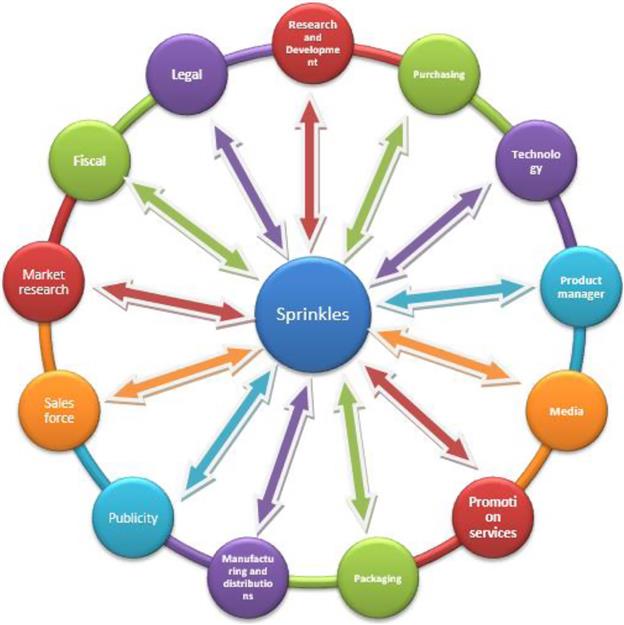
Figure 2: Brand Management.
Test marketing and commercialization: Test marketing is not an extension of the Sprinkles screening and development stages, rather it is a sample launching of the entire marketing mix under the control of strict marketing research norms. Before launching Sprinkles all over Bangladesh, test marketing was carried out to evaluate marketing, advertising, and/or promotional ideas and strategies for efficiency and effectiveness in anticipation of a wider or national roll out. During test marketing, SMC and BRAC considered some of the key factors such as brand name, product concept, pricing, packaging, distribution, sales promotion, advertising, publicity, advocacy and customer satisfaction, and perception. Test marketing helped to obtain a measure of Sprinkles’ sales performance in a natural marketing environment. On the basis of test marketing findings, both SMC and Brac launched the products as Moni Mix and Pushtikona, respectively.
NEED FOR SOCIAL MOBILIZATION THROUGH INFLUENCING BEHAVIOR:
Social changes can be brought about through influencing attitude, intention, and behavior of individuals. Influencing behavior in any individual is a time-consuming process. A number of factors usually trigger influences to imbue hygienic behavior. An inflection point, at which a person intends to influence (not change) their behavior, must first be reached. The process of reaching this state of mind depends on a person’s exposure to new information about an object, event or issue; knowledge and understanding of themselves and their environment; pressure from the community or peer groups; and necessary resources, facilities and skills. All such reinforcing factors will influence a change in an individual’s beliefs. People are assumed to understand the consequences and benefits of influencing their behavior.
A person does not adopt a new behavior immediately after hearing something once, by seeing an IEC (information, education, and communication) material or by exposure to any “behavior influence communication” (BIC) campaign. In general, five characteristic steps are associated with the process of influencing individual’s behavior: (1) Increased awareness and knowledge, (2) Approval through belief, (3) Formation of positive attitudes, (4) Positive intentions, and (5) Counseling and advocacy (source?).
An individual does not have to go through all five steps. The first two steps — increased awareness and knowledge and approval — are the easiest to achieve. Variation in the behavior change process starts during the formation of positive attitudes toward the desired “change.” The largest challenge of behavior “change” is developing positive intentions. Programming efforts and campaigns need to concentrate on addressing the intention process, not only increasing knowledge and awareness. Positive intention leads to practice, and hence influencing the behavior toward ultimate accepting or rejecting any product, services, or practices.
Steps to influence behavior: Sprinkles is a new product to customers and other stakeholders. The major task of the marketing and communication campaigns would be to create awareness and more importantly motivate mothers and caregivers to buy Sprinkles for their children and later become advocates of the Sprinkles brand. The following behavior influence framework illustrates the progression from increased knowledge to sustained change and, finally, advocacy. The framework emphasizes that the communication intended to influence the change is a continuous process. Behavior change is the goal, but several intermediate steps must be addressed before that goal is attained.20 Furthermore, people at different stages constitute distinct audiences, requiring different messages and sometimes different vehicles, such as IPC, mass media, or social mobilization.
• Knowledge: (a) Recalls Sprinkles-related messages. (b) Understands what Sprinkles is?
• Approval: (a) Responds favorably to Sprinkles-related messages. (b) Discusses Sprinkles-related issues through personal network (family, friends, etc.). (c) Approves Sprinkles.
• Intention: (a) Recognizes that Sprinkles can combat IDA. (b) Intends to consult a provider. (c) Intends to give Sprinkles to their children.
• Practice: (a) Full compliance. (b) Experiences and acknowledges personal benefits of Sprinkles.
• Advocacy: (a) Advocates others to practice.(b) Supports programs in the community.
The study suggested that the concept of Sprinkles and its related issues must be well understood and grasped; this can be achieved through community mobilization. Developing an appropriate social communication campaign is imperative to overcoming the critical challenges of (a) Regular intake, (b) consumption of 60 sachets in 60–90 days, and (c) advocacy among all, and national issue.
Figure 3 shows the coordinated efforts of social mobilization and a communication campaign that work together to convince mothers to buy Sprinkles for their children.21
The formative research on Sprinkles revealed a positive potential business opportunity. The findings were disseminated among the prospective organizations and decision makers. Based on the recommendations, Social Marketing Company, BRAC, and Renata showed interest in the marketing of Sprinkles under different brand names. In addition, the World Food Program (WFP) distributed Sprinkles among the Sidr (cyclone) affected people. The post formative research scenario on marketing Sprinkles is narrated below.
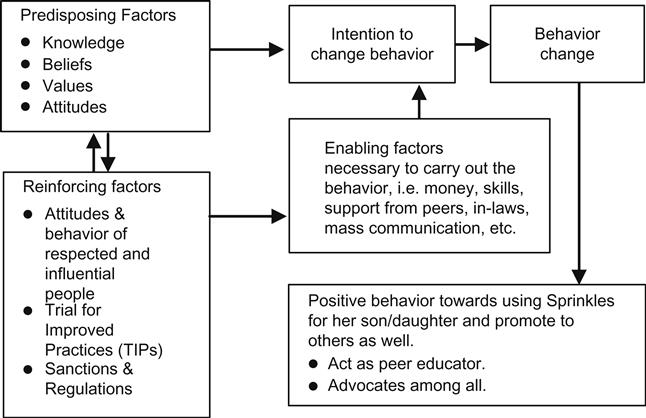
Figure 3: Social Mobilization and Communication Model for Sprinkles.
Social Marketing Company: Social Marketing Company (SMC), Bangladesh, is dedicated to providing opportunities for better family health for the people of the country, by addressing issues of social priority. In Bangladesh, SMC is a pioneer in the successful marketing of social products, such as oral saline, contraceptive pills, and condoms. In May 2008, SMC introduced Sprinkles to address childhood IDA and sold them under the brand name of “Moni Mix.” SMC promptly started marketing the product in 2008, covering all of Bangladesh’s 64 districts. The sales trend as observed immediately after the launching of Sprinkles are shown in Figure 4. Moni Mix contains five ingredients — iron (12.5 mg), zinc (5 mg), folic acid (160 µg), vitamin A (300 µg), and vitamin C (30 mg).
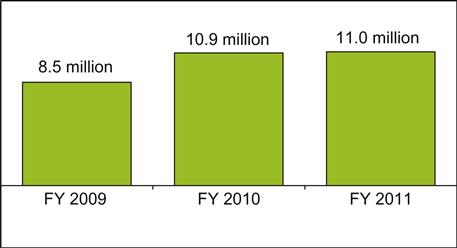
Figure 4: Sales of SMC Moni Mix 2009–2011.
BRAC’s response to childhood anemia: BRAC, the largest NGO in the world, has a successful track record of working with the poorer populations within and outside Bangladesh. In December 2010, BRAC started marketing Sprinkles under the brand name Pushtikona, targeting infants and children of 7–60 months in poorer communities. BRAC, in partnership with GAIN and Renata Ltd. (a private pharmaceutical manufacturing Pushtikona for BRAC), started marketing this micronutrient powder (MNP), covering 61 districts of Bangladesh (455 sub-districts) through BRAC CHVs.
World Food Program: The WFP in Bangladesh implemented an Emergency Operation Programme (EMOP) in 2009 in Sidr cyclone-affected coastal districts of Bangladesh. In the first three months of the program, WFP distributed food to a population of 2.3 million. WFP also distributed Sprinkles, commonly referred to as multiple micronutrient powder (MNP), under the brand name Pushtika, for nutritional rehabilitation of a target group of 168,000 beneficiaries consisting of children (6–59 months) and pregnant and lactating women in six cyclone-affected districts. The distribution began in mid-March 2008, lasting for about six months.
Research has revealed that consumers (mothers and other stakeholders) have well accepted the newly introduced Sprinkles, or MNPs. Sprinkles aims to reduce IDA among children, especially those who are poor and underprivileged. The research suggested using the Social Marketing concept to push the product distribution in Bangladesh. BRAC and Social Marketing Company have accepted the research findings and have started marketing the product using two brand names — Pushtikona and Moni Mix respectively: Sales trends are positive and encouraging.
On the basis of research, the marketing of Sprinkles by two large organizations — SMC and BRAC paved the way for the poor and underprivileged people of Bangladesh. It can be concluded that this noble venture can be replicated in other countries as a Social Marketing or social business approach for reducing iron-deficiency anemia among the millions of poor and malnourished children globally.
1. What is the uniqueness of formative research which helped designing Social Marketing concepts in Bangladesh?
2. Why social mobilization campaign was important during and after launching any product like Sprinkles?
3. While developing any communication campaign for any social product or service, do you think that a communication manager should concentrate more on influencing behavior than for changing?
Formative research is a comprehensive research technique that is used before a program or intervention is designed and implemented, or while a program or intervention is being conducted. This research is useful to look at the community before any intervention so that the researchers or implementers can to understand the behavior, practices, interests, and needs of different populations or any issues as per the research objectives in their community. Formative research can help to:
• define and understand study populations
• design concept or programs; specific to the needs of those populations
• understand the acceptability and feasibility to target audience before launching the program or intervention
• design communication campaign (messages, format, vehicles, etc.)
• improve any approaches.
Formative research is an essential tool especially during launching any social products or services. Therefore, it should be an integral part of developing any concept, program or adapting program or launching any product or service. In addition, this approach may also be used to refine and improve any ongoing programs or activities,
Therefore, formative research approach was used to understand the acceptability of marketing and distributing Sprinkles among the targeted population in Bangladesh for about a year. The research study helped designing the Social Marketing and communication campaigns.
Social products and services are deeply linked with behavioral beliefs and practices, for years, sometimes for generations. For example, sexual taboos influence the social campaigns related to HIV/AIDS or contraceptive uses in South Asian countries, which again varies from African countries. Similarly, social campaigns against Female Genital Mutilation in few African countries are deeply attached to religious values and beliefs. Therefore, social mobilization is essential to influence the behavior-related changes.
Sprinkles was a new product and mothers were not aware of any such supplements. Moreover, there were challenges from different traditional healers (simply for business motives). To counter tradition-old myths and beliefs, the organizations like Unicef, Brac and SMC had to launch research-based social mobilization campaign.
Though Johns Hopkins University developed the concept of Behavior Change Communication — BCC few decades ago and implemented in many countries, but recently scholars and researchers started debating on this concept, about its efficacy and practicality. The BCC model evolved from a health education and information approach (sometimes known as IEC — information, education, and entertainment) to respond to what we now know about the need for engaging communities but it is still stuck in an individualistic communications dominated paradigm focused on getting people to change their behavior and do what they are told by external experts. According to Professor French, “BCC is an impediment to the delivery of more effective systemic social programs. It often only focuses on the symptoms of problems and does nothing to address the causes. BCC approach has serious limitations and is often counterproductive as it focuses on individual change and is worse only on the role of communication in that process. It is the time to start a movement to challenge BCC and replace it with a more strategic approach to using citizen insight to develop comprehensive behavioral influence programs that use every policy tool available to tackle the causes and symptoms of social problems rather than pretending that communication is the solution.” According to him, the five important limitations are — first, it is overly focused on change rather than influencing behavior such as maintaining and fostering positive social behavior. Second, it assumes that communication with a bit of community engagement thrown in is a powerful influence on change when we know that often it is not. Third, it conceptualizes community engagement as a means to an end, that is, behavior change rather than an end in itself, that is, self-determination. Fourth, it discounts up-stream environmental and economic issues and over emphasizes personal responsibility. In essence, it is a victim blaming approach. Lastly, it does not utilize everything we know about setting up choice environments and putting in place supportive social policy as the key ways to improve health and well-being. (French, CEO at Strategic Social Marketing).c
a. Prof. Muhammad Yunus wrote in his books “Creating a world without poverty - Social Business and the future of capitalism and Building Social Business
b. Quoted from an article on “Can Wealth Concentration be Stopped?” by Professor Mohammad Yunus sent to author (Dr. Khalid Hasan), February 2016.
c. Prof. Jeff French mentioned while reviewing the concept of social marketing of this article.